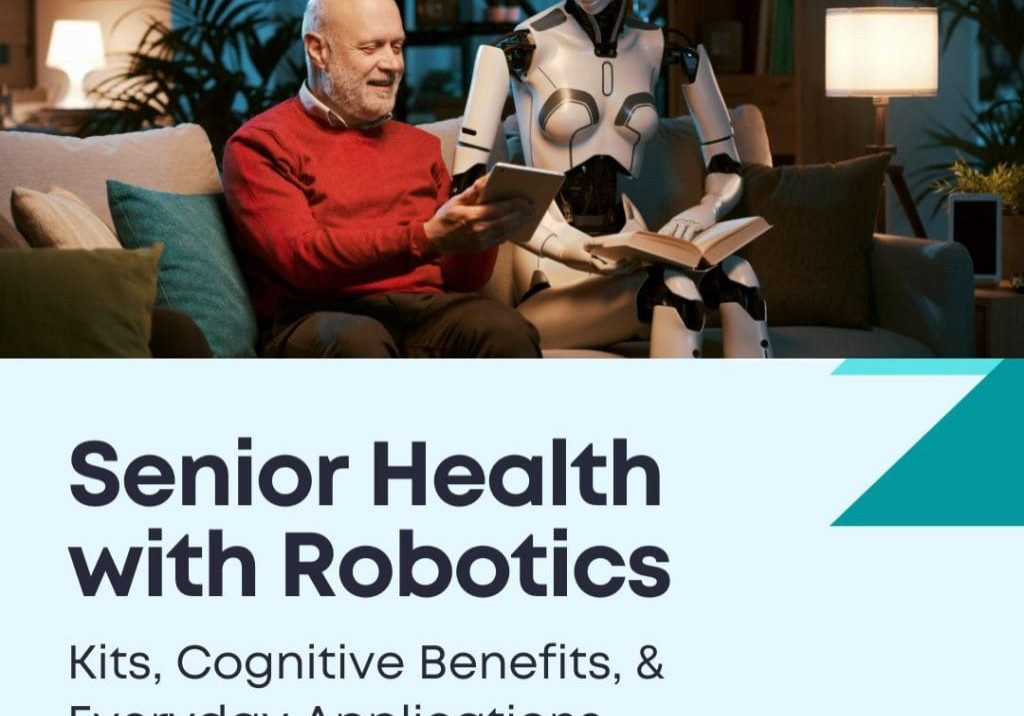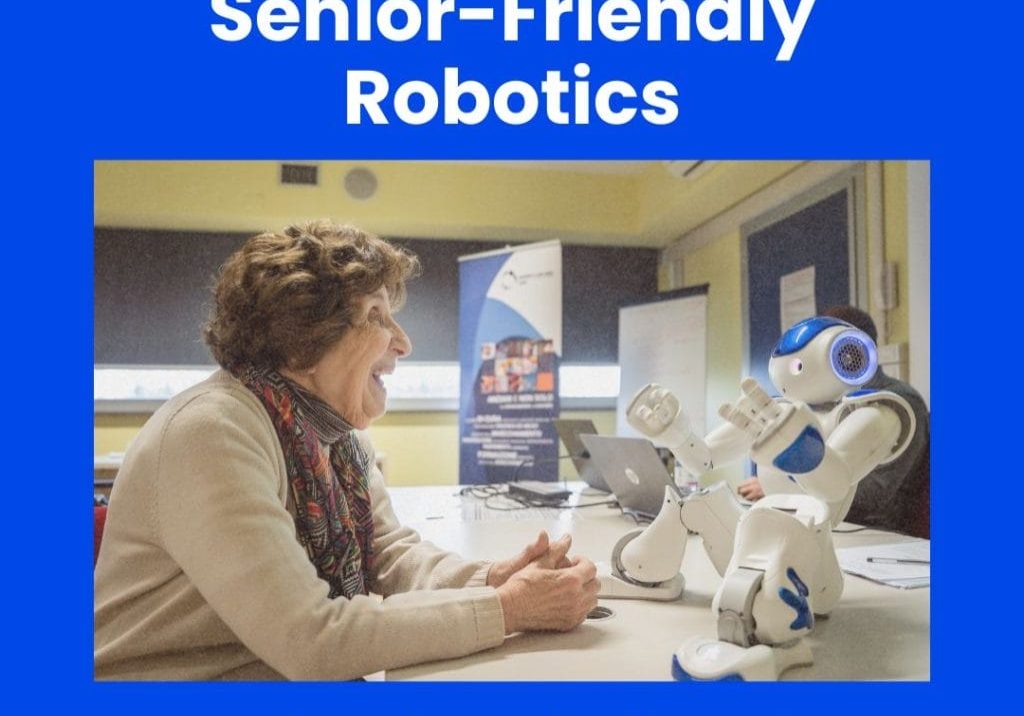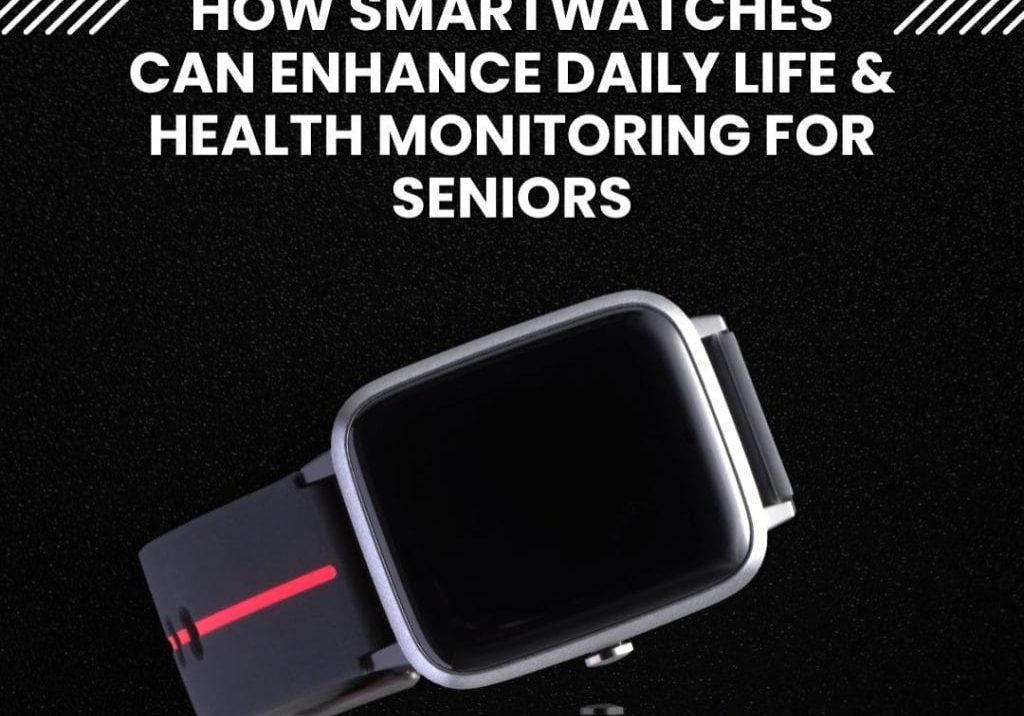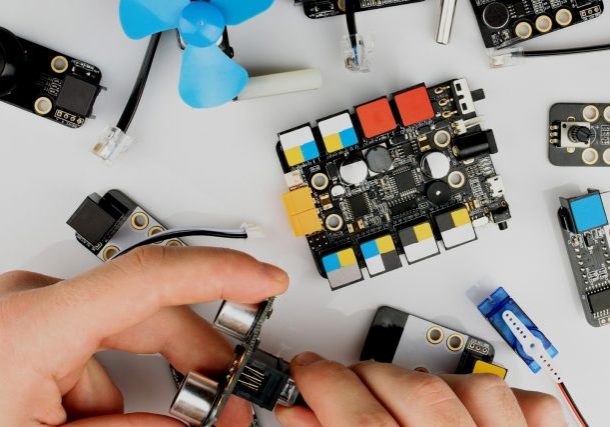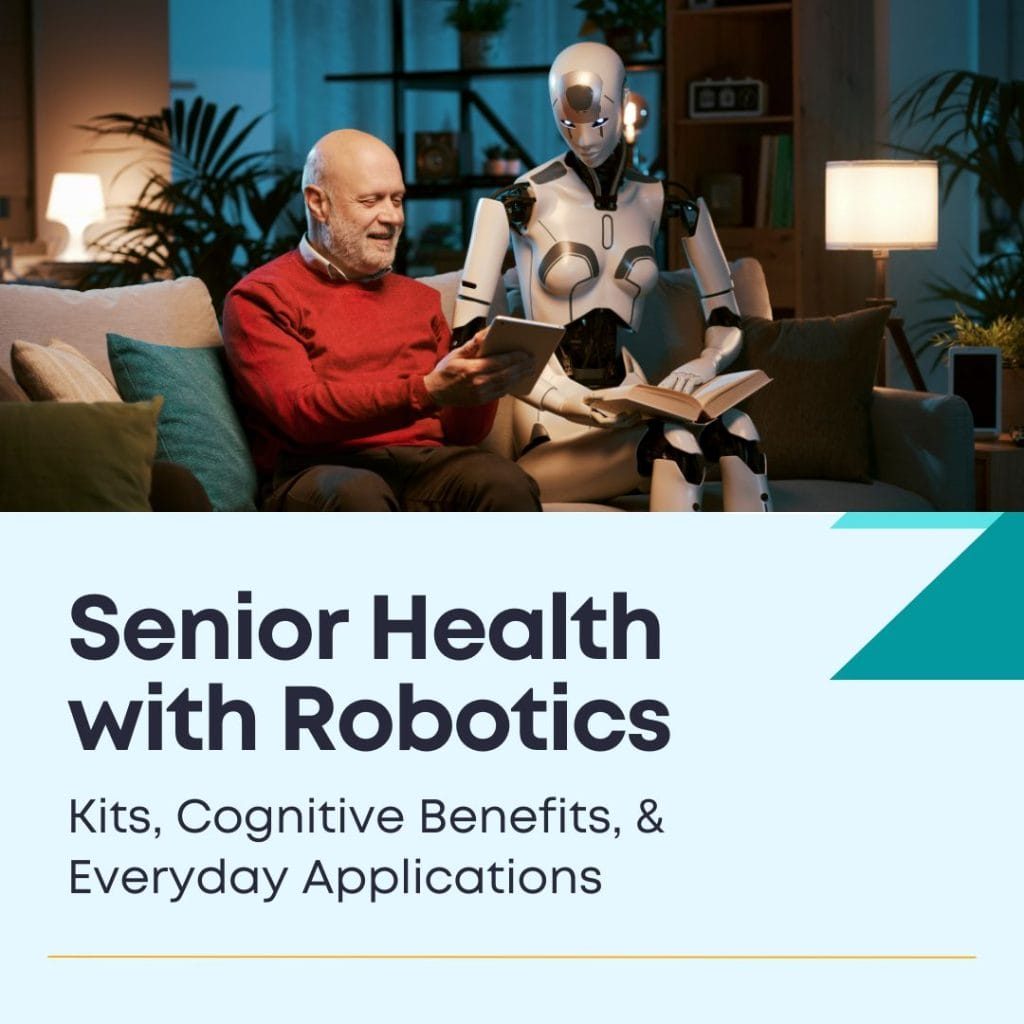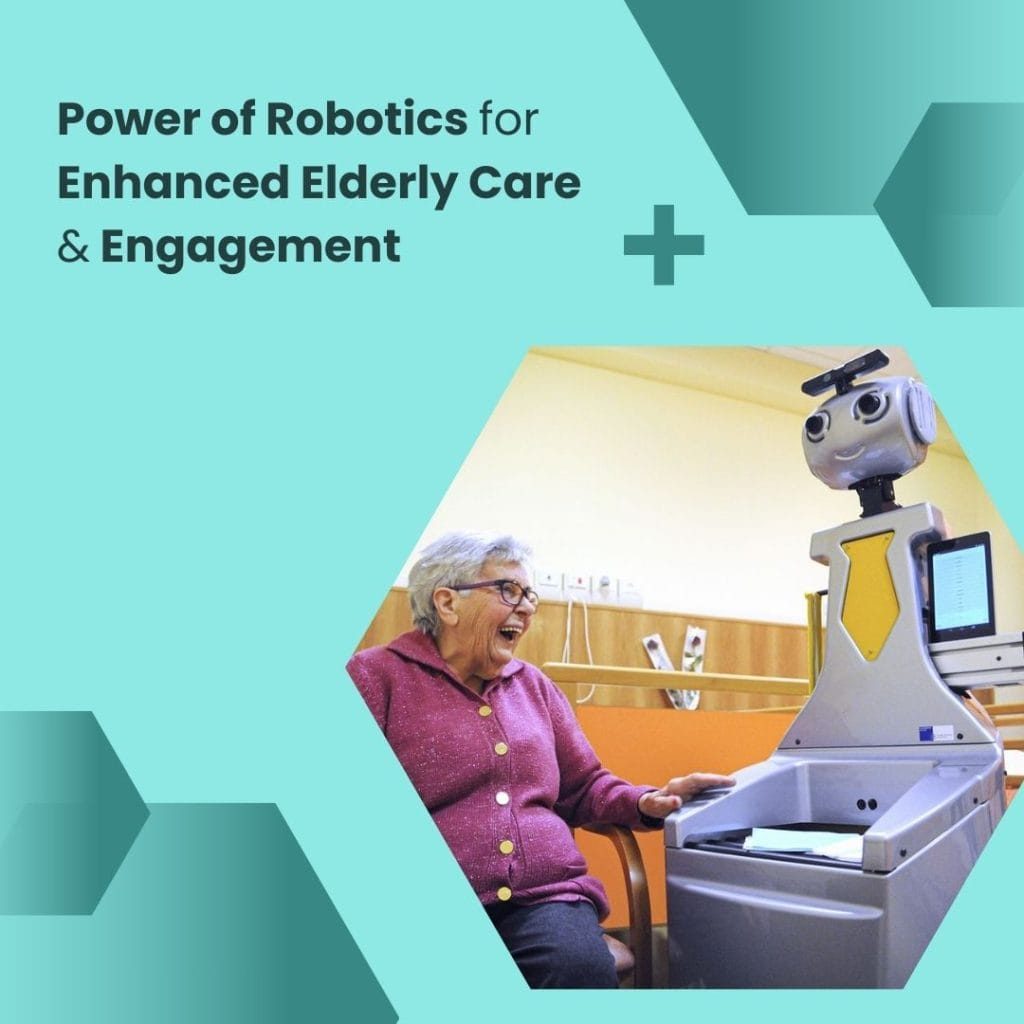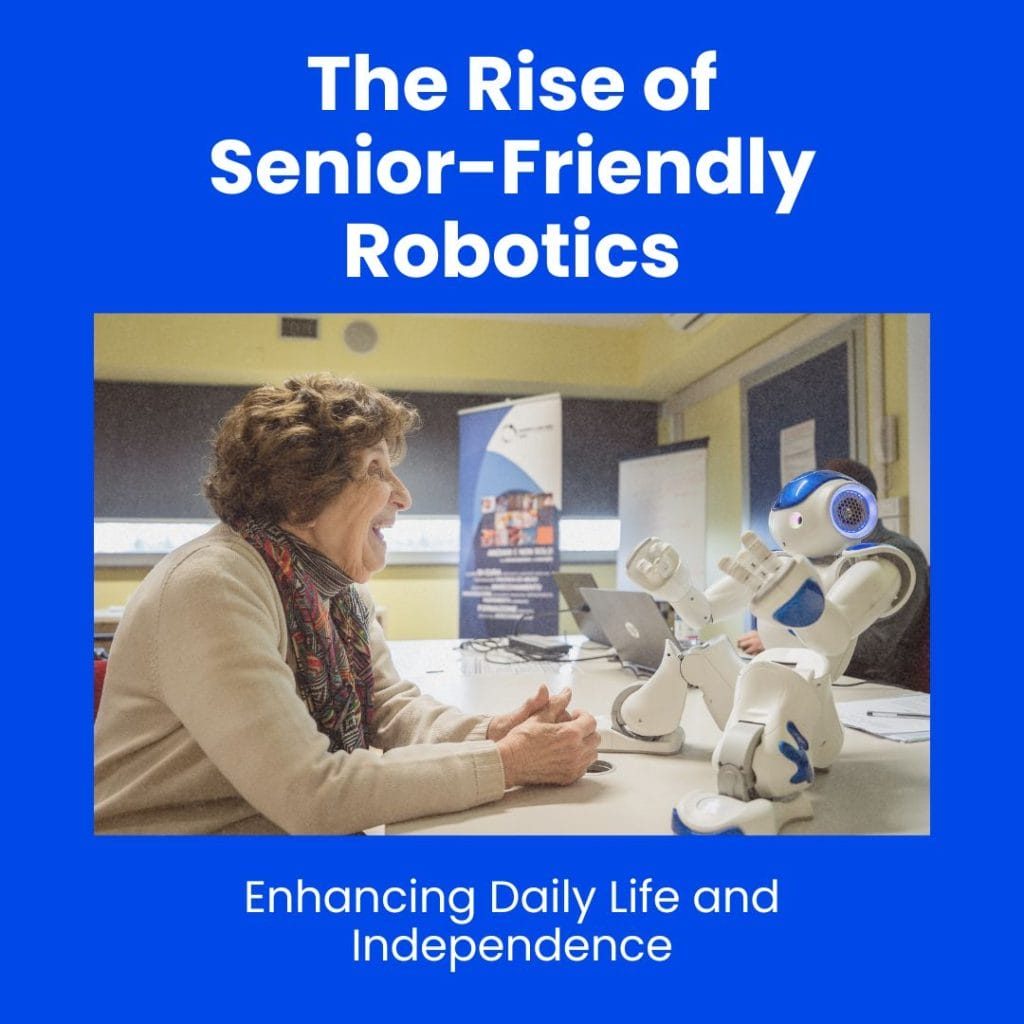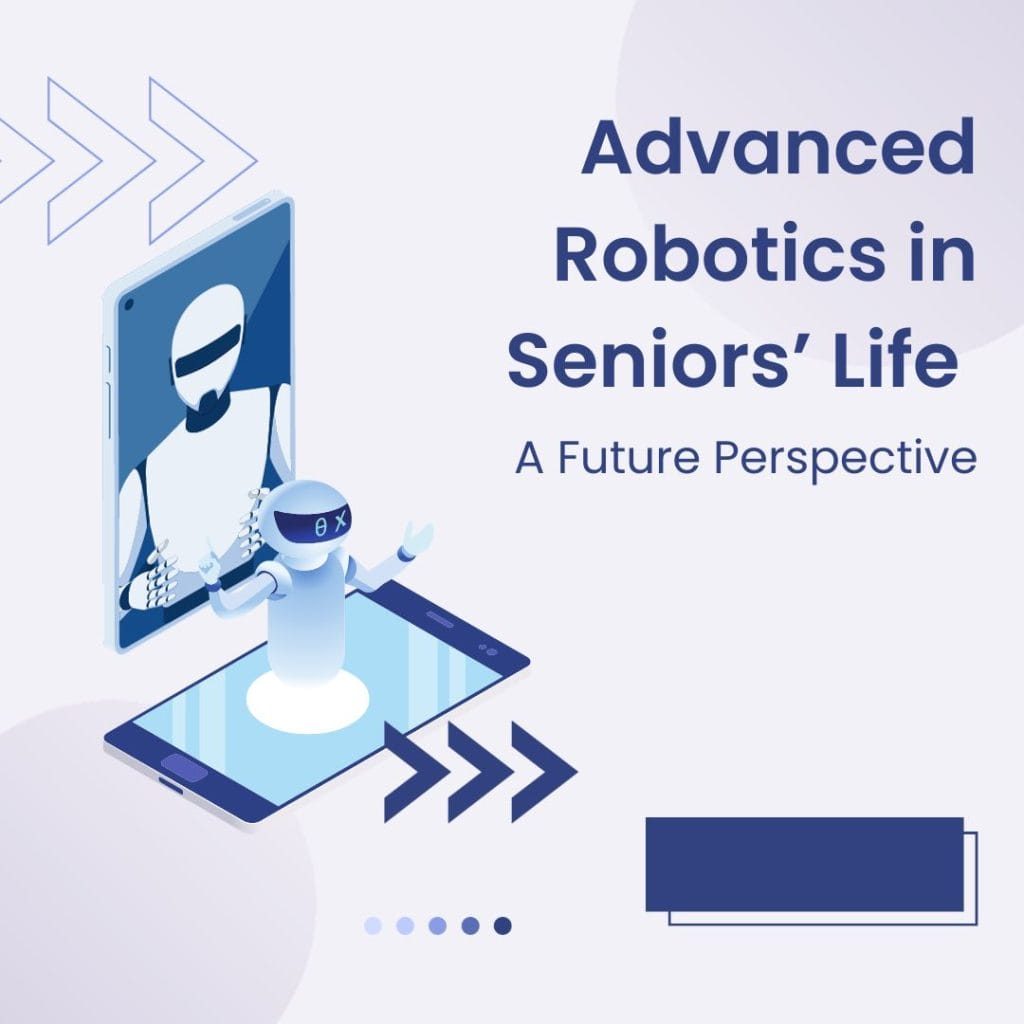Today, our world is witnessing a notable shift as the number of older adults surges. With entire societies aging, there’s an urgent need for top-notch care for our seniors. However, the challenge is that the demand for caregivers surpasses the available resources. In response, the field of robotics has stepped in with some exciting solutions.
Robotics holds tremendous promise in transforming elderly care. It can keep a close eye on health, offer companionship, and lend a helping hand with daily tasks. In this article, we’ll explore how robotics is making waves in caring for the elderly, shedding light on its potential uses, advantages, and the ethical considerations that come with it.
Benefits of Robotics in Elderly Care
As our society keeps changing, so does how we care for our elders. One significant leap forward in recent times is the integration of robots into elderly care.
With their blend of human-friendly designs and cutting-edge technology, these robots are transforming how we support and care for older adults. They’ve become essential in improving the quality of life for seniors through their physical capabilities, artificial intelligence, and machine learning.
The potential benefits of using robots in elderly care are enormous. Whether it’s helping with daily tasks, providing companionship, or enhancing the well-being and safety of our seniors, these robots are reshaping how we approach caregiving for the elderly.
The advantages of robotics in elderly care span various areas, including assistance with daily activities, managing healthcare, and remote monitoring. Exploring these areas helps us grasp the profound impact of robotics on elderly care and the lives of countless seniors worldwide.
It’s crucial to note that while robots advance in remarkable ways, they won’t replace human caregivers. Instead, they aim to work alongside them, offering additional support. This allows human caregivers to focus on care’s more personal and complex aspects.
Rather than taking over, robots are here to collaborate with humans, creating a future where older adults can maintain their independence, enjoy a better quality of life, and age with dignity. Here’s how robots are making a significant difference:
Enhanced Independence:
Robots assist older adults in staying independent by helping with various tasks. Devices like mobility aids and exoskeletons enable those with mobility impairments to perform routine activities and move around safely.
Assistance with Daily Activities:
Robots lend a hand with daily living activities such as meal preparation, bathing, medication reminders, and dressing. This support eases the load on caregivers, ensuring that older adults receive efficient and timely assistance.
Fall Detection and Prevention:
Falls are a major concern for the elderly, and robots equipped with artificial intelligence algorithms and sensors can detect falls in real time. This prompt intervention reduces the risk of serious injuries, which is especially crucial given the high incidence of falls among the elderly.
Monitoring Vital Signs
Robotics can monitor vital signs like body temperature, blood pressure, and heart rate. Wearable sensors and devices gather data, offering insights into a patient’s health status and allowing for early detection of potential health problems.
Emotional Support and Companionship
Many older adults often experience feelings of social isolation and loneliness. But here’s where social robots step in—they’re not just machines but companions providing emotional support. Through interactive activities, conversations, and entertainment, these friendly robots help alleviate the sense of isolation, engage in meaningful interactions, and contribute to the overall mental well-being of older individuals.
Potential Applications of Robotics in Elderly Care
In the world of elderly care, where the demand for personalized attention often outstrips the availability of skilled caregivers, robotics emerges as a promising solution. Technology’s rapid progress enables machines to connect with humans more intuitively, handling complex tasks while striving to enhance the lives of our seniors.
Innovators and researchers aim to elevate the quality of life for our elderly, lighten the load on caregivers, and empower seniors to maintain their independence.
By tapping into the potential of robotics, healthcare providers can reshape and improve elderly care, envisioning a future where older individuals can gracefully age in the comfort of their homes while preserving their dignity.
While engineers and developers face challenges, the potential applications of robotic technology in elderly care offer hope for a more efficient and compassionate approach to meeting the needs of our aging population.
Robotic Caregivers with Autonomy
Imagine fully autonomous robots assisting with daily care tasks, providing companionship, and monitoring health conditions. These robots, programmable to adapt to individual needs, ensure personalized care, easing the strain on human caregivers.
Physical Therapy and Rehabilitation
Robots equipped with advanced motion sensors and actuators can aid in physical therapy and rehabilitation for older adults with mobility challenges. Tracking progress, offering real-time feedback, and guiding through exercises, these machines enhance the effectiveness of physical therapy.
Cognitive Stimulation
Picture robotic devices with virtual reality platforms and interactive games stimulate the cognitive abilities of older adults. These technologies provide mentally engaging activities, delaying cognitive decline and improving cognitive function.
Home Automation
Thanks to robotics, homes can become smarter, automating routine tasks like organizing, cleaning, and cooking. This improves efficiency in daily activities and enhances comfort, convenience, and safety for older adults, allowing them to age in comfort and confidence.
Telepresence Robots
Telepresence robots offer a virtual presence and remote communication, bridging the gap for older adults unable to leave their homes due to illness. These robots enable virtual attendance at family gatherings, visits to new places, or participation in social events, reducing isolation and fostering social connections.
Drawbacks of Robotics in Elderly Care
While the introduction of robots in elderly care brings exciting possibilities for improving seniors’ lives, it’s crucial to recognize that this technology comes with its set of challenges and drawbacks.
As we delve into the limitations of using robots in elderly care, it becomes clear that there are areas where human caregivers outshine their robotic counterparts. Understanding these limitations is key to finding a balanced approach combining the strengths of robots and human caregivers, ensuring the best possible care for our aging population.
Lack of Human Connection:
One major concern is the potential loss of human connection. Seniors often need genuine companionship and emotional support; something robots may struggle to authentically provide. Despite advances in artificial intelligence, the irreplaceable touch of a human hand could be missing, leading to feelings of isolation and loneliness among the elderly.
Limited Flexibility and Adaptability:
Despite their capabilities, robots may struggle to adapt to each user’s shifting and unique needs. Elderly care often requires personalized attention, which robots may find challenging due to their limited flexibility. The empathy and adaptability required for diverse needs might be beyond their reach.
High Initial Costs:
The sophistication of robotic systems makes them marvels of technology, but it comes at a cost. Developing and implementing these systems for elderly care can be expensive, covering purchase, maintenance, updates, and upgrades. These high costs can limit accessibility and the widespread adoption of robotics in elderly care.
Technological Limitations:
While robotics technology has advanced, there are still technical limitations. Challenges may include difficulty performing delicate tasks, understanding and responding to human speech and gestures, and navigating complex environments. These limitations can impact the effectiveness of robots in providing comprehensive and personalized care.
Ethical Considerations:
Incorporating robots into elderly care raises ethical concerns, including data security, consent, and privacy. The ongoing debate concerns the potential devaluation of emotional support and the human touch. Addressing these concerns is crucial to protect the dignity and rights of elderly patients.
Resistance to Acceptance:
Some seniors may resist the idea of incorporating robots into their care. Trust and familiarity with technology can vary among older adults, with some being hesitant to embrace new technologies. Overcoming this resistance and building trust between older adults and robots is a significant challenge.
Reliability and Maintenance:
Like any technology, robots require updates, repairs, and regular maintenance. Ensuring their reliability is crucial for their effectiveness as caregivers. However, handling repairs and maintenance often requires technical expertise, posing a barrier for caregivers and providers.
Conclusion
In conclusion, it’s essential to balance the assistance provided by machines and the irreplaceable care offered by humans. By addressing ethical concerns and recognizing the unique strengths of both, we can pave the way for a future where the elderly can gracefully age with the support of modern artificial intelligence technology.

